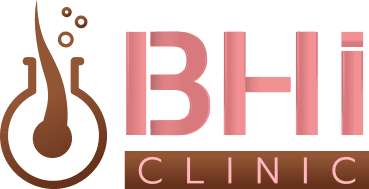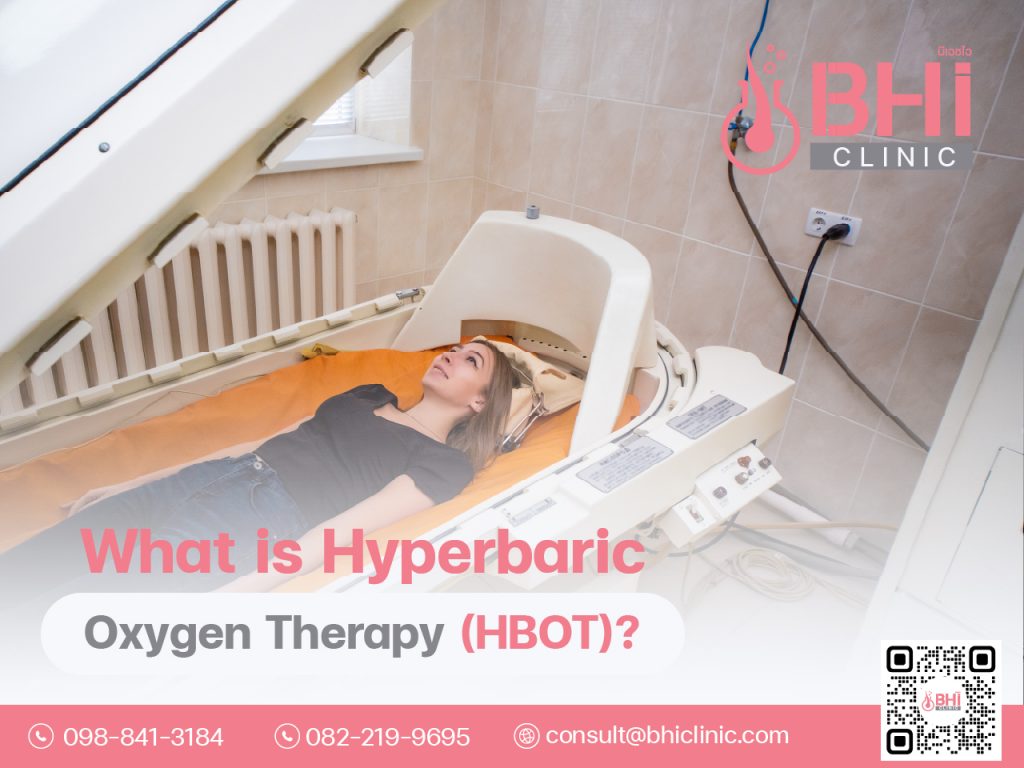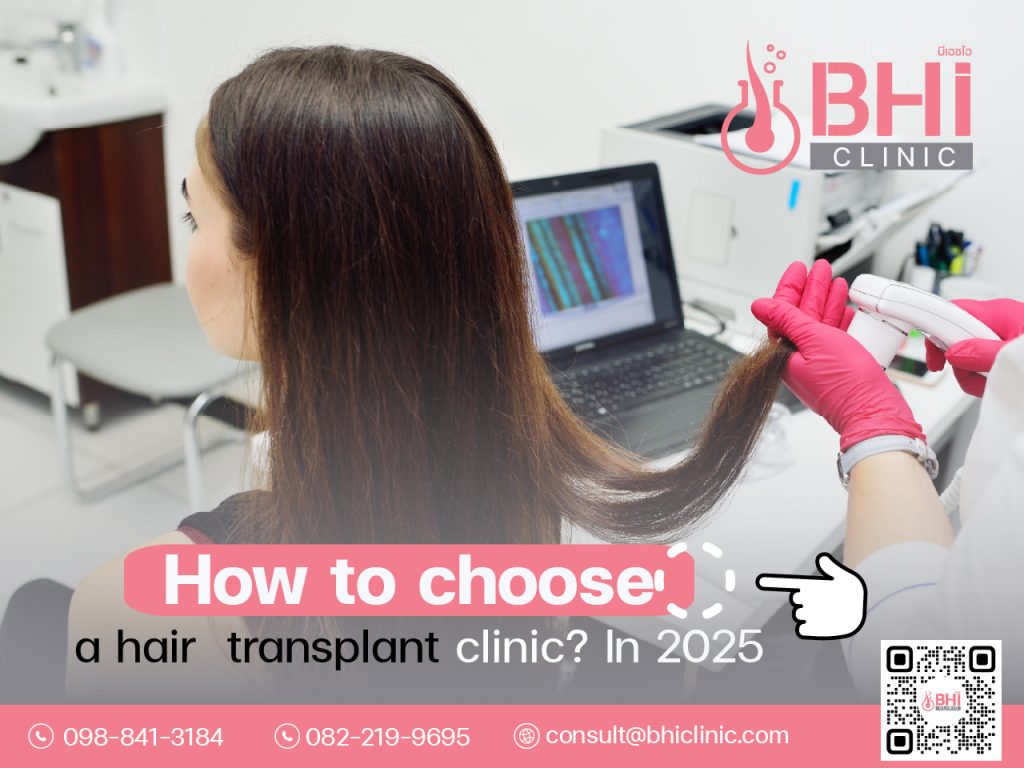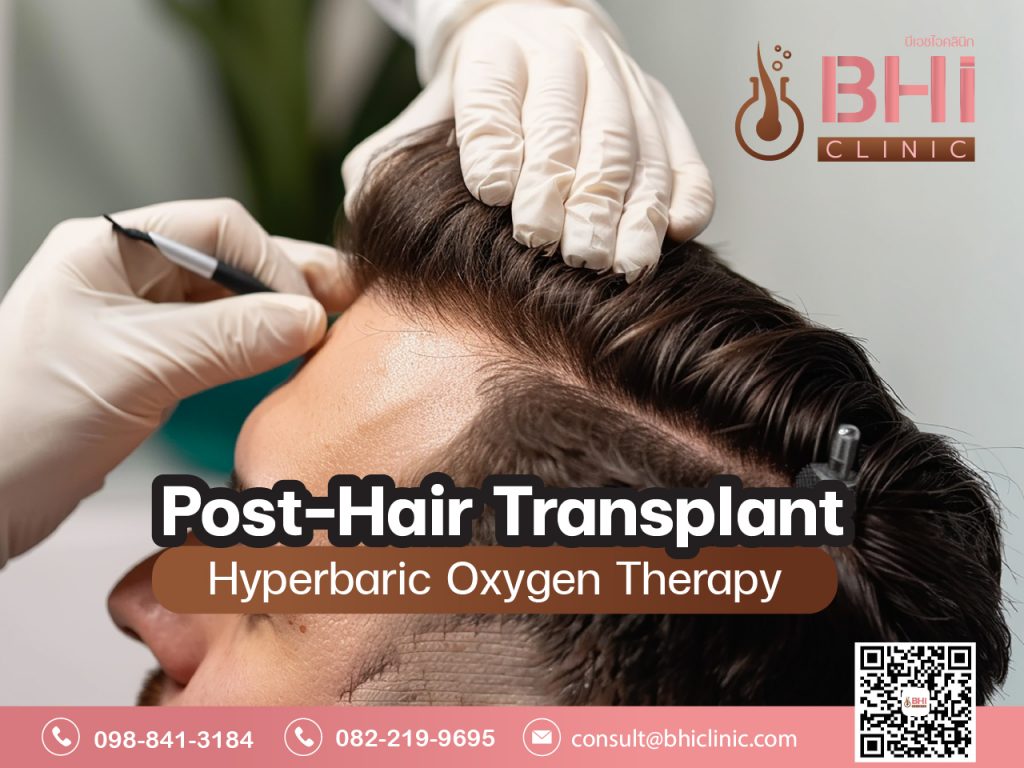Hyperbaric Oxygen Therapy (HBOT) involves breathing pure oxygen in a pressurized chamber to increase the oxygen levels in body tissues. This therapy has been used for decades to treat various conditions such as decompression sickness in divers, carbon monoxide poisoning, and diabetic wounds. Recently, research has suggested that HBOT may offer solutions for addressing hair loss, leading to increased interest in its potential applications.
How HBOT Works for Hair Loss
HBOT is believed to enhance blood circulation and oxygen delivery to hair follicles. This process may stimulate new cell growth and tissue repair, potentially revitalizing hair follicles.
- Collagen Production and Microcirculation: HBOT is thought to promote collagen production and improve microcirculation, both essential for maintaining the strength of hair follicles and hair.
- Anti-inflammatory Effects: HBOT has anti-inflammatory properties that may reduce inflammation and damage to scalp tissues, thereby improving scalp health.
Benefits of HBOT for Hair Health
- Post-Hair Transplant Recovery: HBOT can alleviate pain, swelling, and bruising following hair transplantation.
- Reduced Follicle Shedding: It may help minimize hair follicle shedding and itching.
- Improved Graft Survival: Theoretically, HBOT may enhance oxygen delivery to cells, increasing graft survival rates during hair transplantation procedures.
Despite these potential benefits, evidence supporting HBOT’s effectiveness for hair restoration is limited. Its application in clinical settings primarily relies on previous studies related to other health conditions.
Risks of HBOT
- Barotrauma:
Barotrauma arises from pressure changes in the chamber, which can damage sensitive areas like the ears, sinuses, or lungs. Common symptoms include ear pain, chest tightness, or breathing difficulties. - Oxygen Toxicity:
Prolonged exposure to high concentrations of oxygen can affect the central nervous system or lungs, leading to symptoms like coughing, difficulty breathing, or in severe cases, seizures. - Fire Hazard:
HBOT chambers with high oxygen concentrations carry a risk of fire if improper materials or equipment, such as spark-generating metals, are used. - Claustrophobia:
Some individuals may experience anxiety or panic due to the enclosed space of the chamber, particularly if they have a history of claustrophobia. - Low Blood Sugar (Hypoglycemia):
HBOT may influence blood sugar levels, especially in diabetic patients or those taking medications that lower blood sugar. Blood glucose levels should be monitored before treatment. - Temporary Myopia (Vision Issues):
HBOT may temporarily cause blurry vision due to pressure changes affecting the lens and shape of the eye. This condition usually resolves once treatment ends. - Collapsed Lung (Pneumothorax):
In rare cases, pressure changes can cause a collapsed lung, particularly in individuals with pre-existing lung conditions such as COPD. - Seizures:
Severe cases of oxygen toxicity affecting the central nervous system may lead to seizures, though this risk is minimal.
Precautions
HBOT should only be performed under the supervision of a medical specialist to evaluate its suitability and minimize risks. Treatment typically takes place in dedicated HBOT centers. It is not recommended for outpatient clinics lacking the necessary facilities to handle severe side effects.
Some smaller healthcare facilities may claim to offer HBOT but only provide oxygen chambers with standard pressure, which is not considered authentic HBOT. True HBOT requires specific protocols and professional oversight to ensure safety and effectiveness.
References:
- Randomized Controlled Trial: The effect of hyperbaric oxygen therapy combined with hair transplantation surgery for the treatment of alopecia. J Cosmet Dermatol, 2021.
- Complications of Hyperbaric Oxygen: Johns Hopkins Medicine. Link




